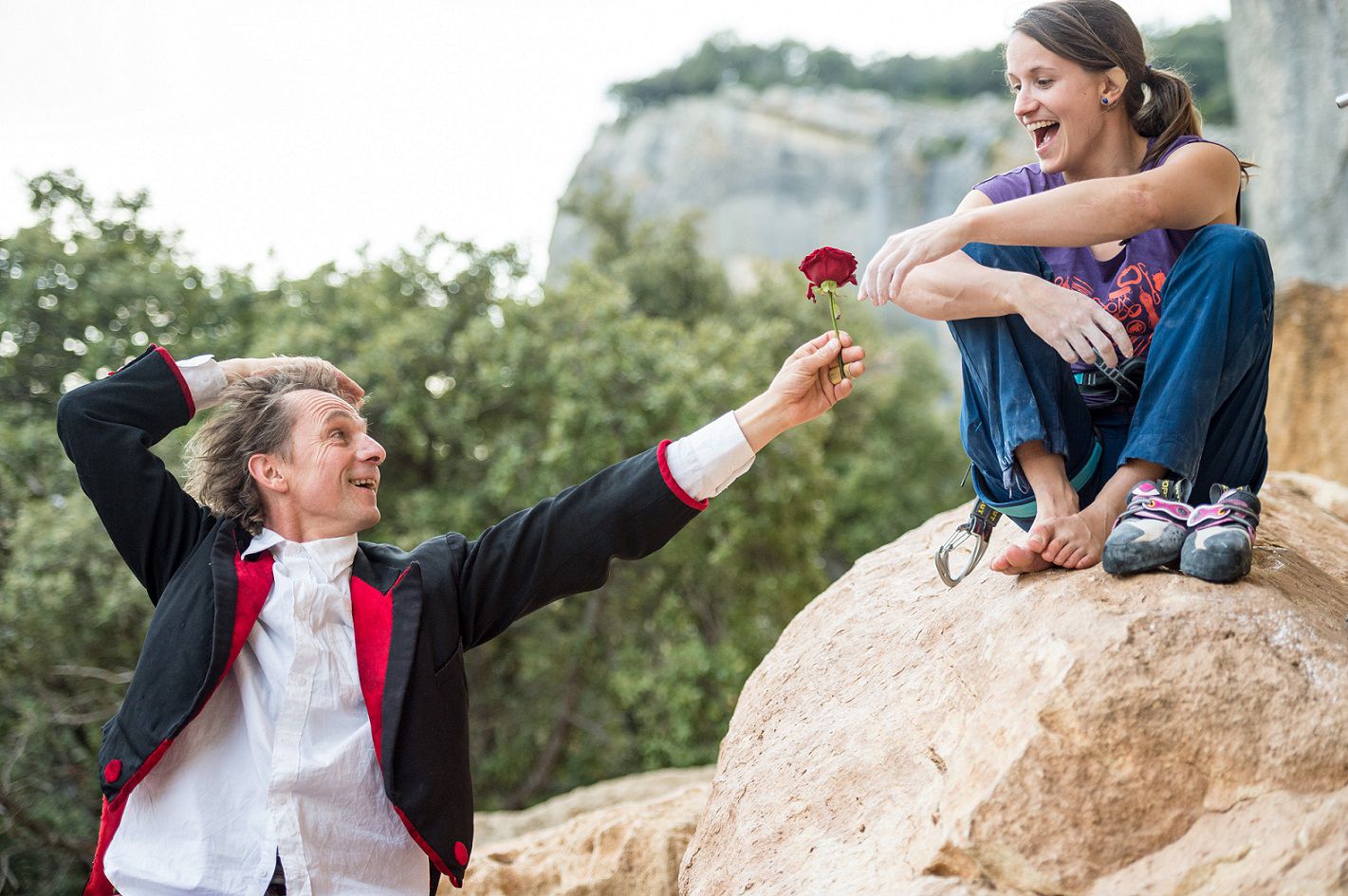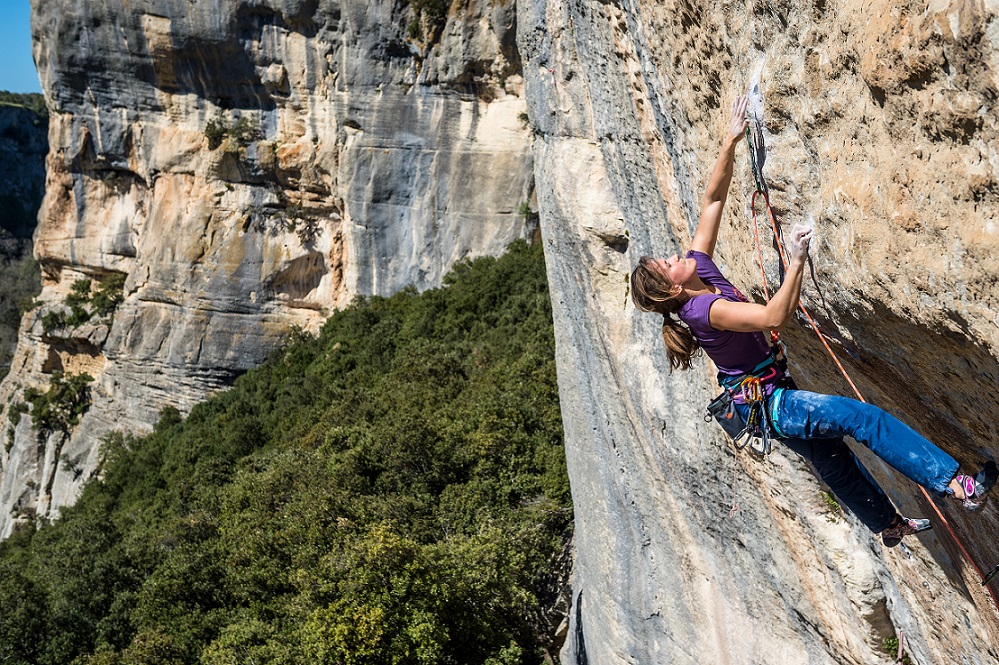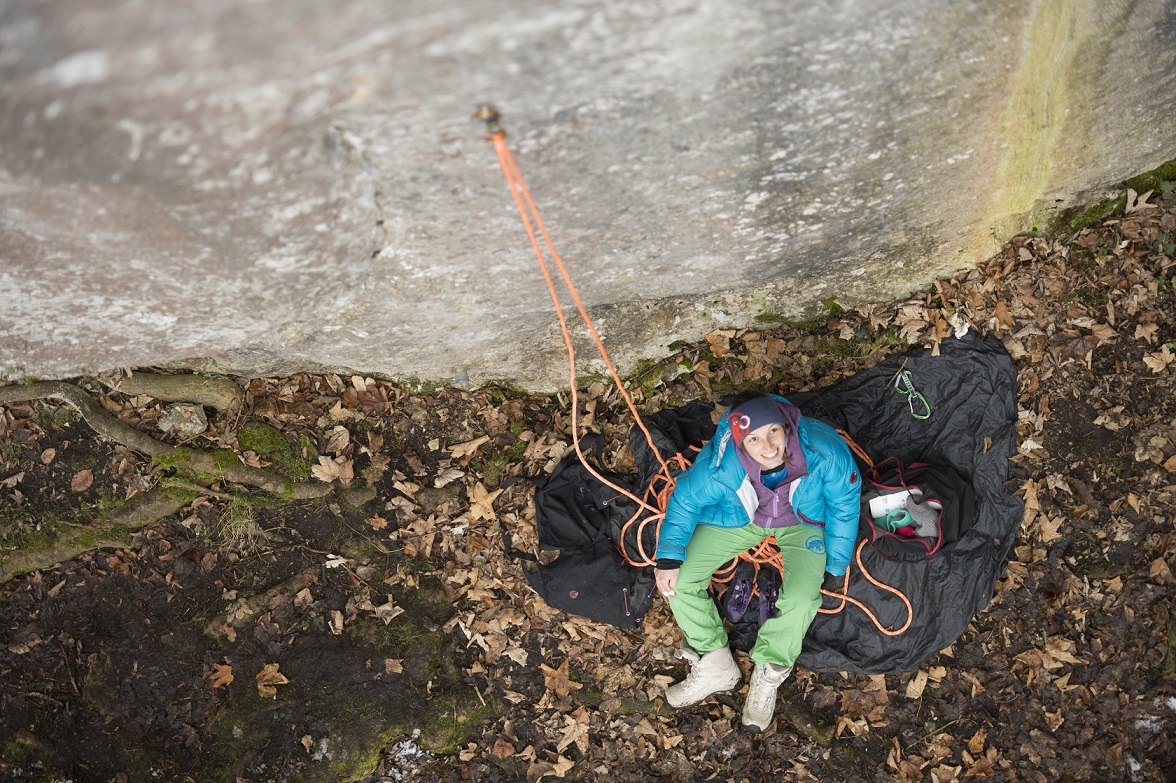Kruder Siblings conquer iconic Verzasca Dam
second edition, attracted 24 of the world's best…

"Le Bout du Monde" – the end of the world – is located at the very right edge of the rock world of Buoux, one of the most famous climbing areas in the world. In the 1980s, climbing history was written here. In 1984 "Le Gang des Parisiens", a group of young, wild climbers from Paris, turned the rocks of Buoux into their playground and the era of the Xth degree of difficulty started right there. When the brothers Marc and Antoine le Menestrel, Jean-Baptist Tribout and Laurent Jacob finally discovered a yellow overhanging wall without any climbing route on the very right part of the wall, there was nothing and nobody that could stop them. Antoine tried to climb a line through the most difficult part of the wall – and since there were no holds along some meters in the lower part, he created one of the most famous rock climbing grips in the world: the "cross pull". It became the epitome of sports climbing in the late 1980s; at the time, it was common to change small or even missing holds artificially. Antoine spent many weeks optimizing his new route until he got through in September 1985.
"La Rose et le Vampire" is still one of the most famous climbing routes in the world. It was the first 8b in the Southern France, and climbers from all around the world came over to try it out. By many would the vampire suck their blood and only few would find the rose– as Antoine said: "The route is the vampire, and the rose is for the winner."

Today, Antoine is working as a choreographer and dancer for the dancing company "Les Lézards Bleus", which he founded and with which he presents a unique vertical ballet: dancing theatre upside down! The complex setup of the choreography of "La Rose" and the difficulty of the individual grips is reflected in the fact that Tyrolean Anna Stöhr, fourfold world cup winner in bouldering and member of the Mammut-Pro Team, took four days to master the route nearly 30 years after its first ascent. It demanded everything from her. „The most difficult was the pull across the roof edge, since it is very far for me”,said the top climber about the route.
How was your time with Antoine? What was the most fascinating for you?
The time with him was really funny. Antoine is a passionate climber and artist.
How did you feel about climbing "La Rose"? Did you like that?
Climbing "La Rose" requires lots of strength, which fits my climbing style. It is pity that there are artificial holds or that there have been "improvements" made along the route. However, this should be seen in temporal context; at that time, it was a common practice in Buoux.
How long did it take you? What was most difficult for you?
All in all, I worked on it for four days in a row. The third day, I was able to do some very good attempts, so I returned in the morning of the day of my departure and was able to actually climb the route. The most difficult was the pull across the roof edge, since it is very far for me.
What do you think about the classification? How would be the route classified today?
I think the classification is okay. Personally, I would give the route the same rating today.
Why do you think Buoux is no longer fashionable among climbers?
Maybe it's because of technical climbing, which is no longer so popular. However, I enjoyed that there weren't 300 tents here in the valley, as they would have been 30 years ago – Antoine told me –, but that we could be all on our own, just the six of us, and all because of me.

How did it all start?
When we were kids, we used to drive to Fontainebleau for climbing. We came to the South, Buoux and the Verdon gorge, from the area of Paris. The Troussier brothers, Patrick Berhault and Patrick Edlinger were the stars there. They called us "Le Gang des Parisiens". We were extremely motivated for climbing!
Did you travel to other climbing areas as well?
We knew that there were Jerry Moffat and Ben Moon in England, Kurt Albert and Wolfgang Güllich in Germany and other good climbers in other countries. When the legendary John-Bachar route "Chasin’ the trane" was climbed on sight, JB and I went to the Franconian Jurassic to climb there as well. It wasn't about the competition of being better than someone else, but simply about doing it as well. We also travelled to England in order to repeat the most difficult route there at that time: “Revelation”. Based on our French ethics that allows working on the individual moves, I was able to repeat this route one day.
What do you personally think about climbing competitions?
My brother and I signed the "Manifeste des 19" as early as in 1985 (a manifest in which 19 of the best French climbers speak up against climbing competitions; editor's note.), because we wanted to develop a value of friendly rivalry instead of competition. The wish for climbing competitions did not arise with us climbers, but with associations and magazines. We feared to lose our freedom. Apart from Edlinger and Berhault, who made their living from climbing, we were all amateurs without any financial profit from climbing. I was not willing to put all my energy into being the best. Therefore, I put my creativity into opening routes along artificial walls.
How did you discover "Le Bout du Monde"?
That was when we had cut down a tree at the start of the "Fissure Serge" route to be able to climb it freely. I saw this magical location for the first time then and was immediately caught in its spell. I named the place "Le Bout du Monde" because I withdrew there for a while, almost like a hermit. I tried to develop myself further while climbing by meditation and reading poems and mystic literature. I wanted to move away from the performance idea to develop poetic climbing.
And then there was "La Rose et le Vampire"?
»"La Rose" is the most important route in my life. It changed me, both my way of climbing and my further life. Before, the rock inspired me, the line of holds that could be climbed. Here, I wanted to create a route that ran along my very limit. I wanted to transfer my ideas for movements onto the rock and put my creativity into practice. Therefore, I created holds as well. It was the last route where I did that. After that, I built all routes on artificial walls.
What does "La Rose" mean to you personally?
“La Rose" wakened the artist in me! I could put my personal ideas of unusual climbing movements into practice here. Developing the cross-pull in the lower part of the route has given me a great amount of energy and motivation. "La Rose" made an artist out of me. I gradually stopped climbing difficult routes soon after and focused on art and poetry.
But you did continue climbing difficult routes, didn't you?
Yes, I did open the "Ravage" in the Basel Jura in 1986, one of the first 8c routes ever, and "Il était une Voie" in Buoux, also 8c.
What do you want to tell today's climbers?
Don't consume so much, be more creative!
Source: http://www.quattro-media.net